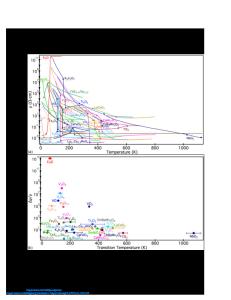Growth and Doping of Zinc Selenide by Molecular Bean Epitaxy
- PDF / 800,219 Bytes
- 12 Pages / 420.48 x 639 pts Page_size
- 30 Downloads / 343 Views
GROWTH AND DOPING OF ZINC SELENIDE BY MOLECULAR BEAN EPITAXY J.M. DePUYDT, H. CHENG, M.A. HAASE AND J.E. POTTS 3M Company, 201-1N-35 / 3M Center, St. Paul, MN 55144.
Recently, with the advent of thermal nonequilibrium growth techniques like molecular beam epitaxy and metalorganic chemical vapor deposition, overcoming some of the problems great progress has been made in Breakthroughs traditionally encountered in the growth and doping of ZnSe. have been made in several areas including the growth of high quality undoped films, in intentional n-type doping and, most importantly, in p-type doping. In this paper we will review the progress made in the growth and doping of ZnSe by molecular beam epitaxy. We will In addition, we will present some of our recent results. 0 describe the growth of ZnSe at temperatures as low as 150 C using thermally We will discuss our production of low resistivity p-ZnSe cracked selenium. and will describe the junction characteristics and injection electroFinally, some problems which luminescence obtained from ZnSe p-n junctions. we feel are limiting the performance of our ZnSe light emitting diodes and the approaches which may be used to overcome these problems will be discussed.
Introduction Zinc selenide (ZnSe) has several properties which make it an attractive material for optoelectronic device applications; it has a direct band gap of about 2.7eV at room temperature, is transparent over a wide range of the visible spectrum and has relatively large nonlinear optical coefficients. Some devices which take advantage of these properties include blue light emitting diodes, injection laser diodes, electroluminescent displays, second harmonic generators, frequency mixers and optical modulators. Construction of the types of devices described above places very stringent requirements on the crystalline quality of the materials used to Unfortunately the growth of large, single crystals fabricate the devices. growth techniques of ZnSe with low dislocation and twin densities using melt 1 has proved to be extremely difficult, if not impossible. In addition to excellent crystalline perfection, some of the proposed The optoelectronic devices also require high quality p-n junctions. difficulty in producing high quality p-n junctions in ZnSe primarily lies in The physics behind the inability to produce conductive p-type material. 2 Since selfthe mechanism of self-compensation. this difficulty is compensation is a direct consequence of thermodynamics, many groups have turned to growth techniques in which growth is controlled by kinetics rather one such technique is molecular beam thermodynamics; than equilibrium 3 epitaxy (MBE). In this paper we wish to focus on the growth and doping of ZnSe by MBE. We will review some of the advances which have been made since this growth technique has been applied to ZnSe and will try to emphasize the more Furthermore, we will describe some of our recent significant results. efforts such as the production of highly conductive p-type films through Li doping, the growth o
Data Loading...











